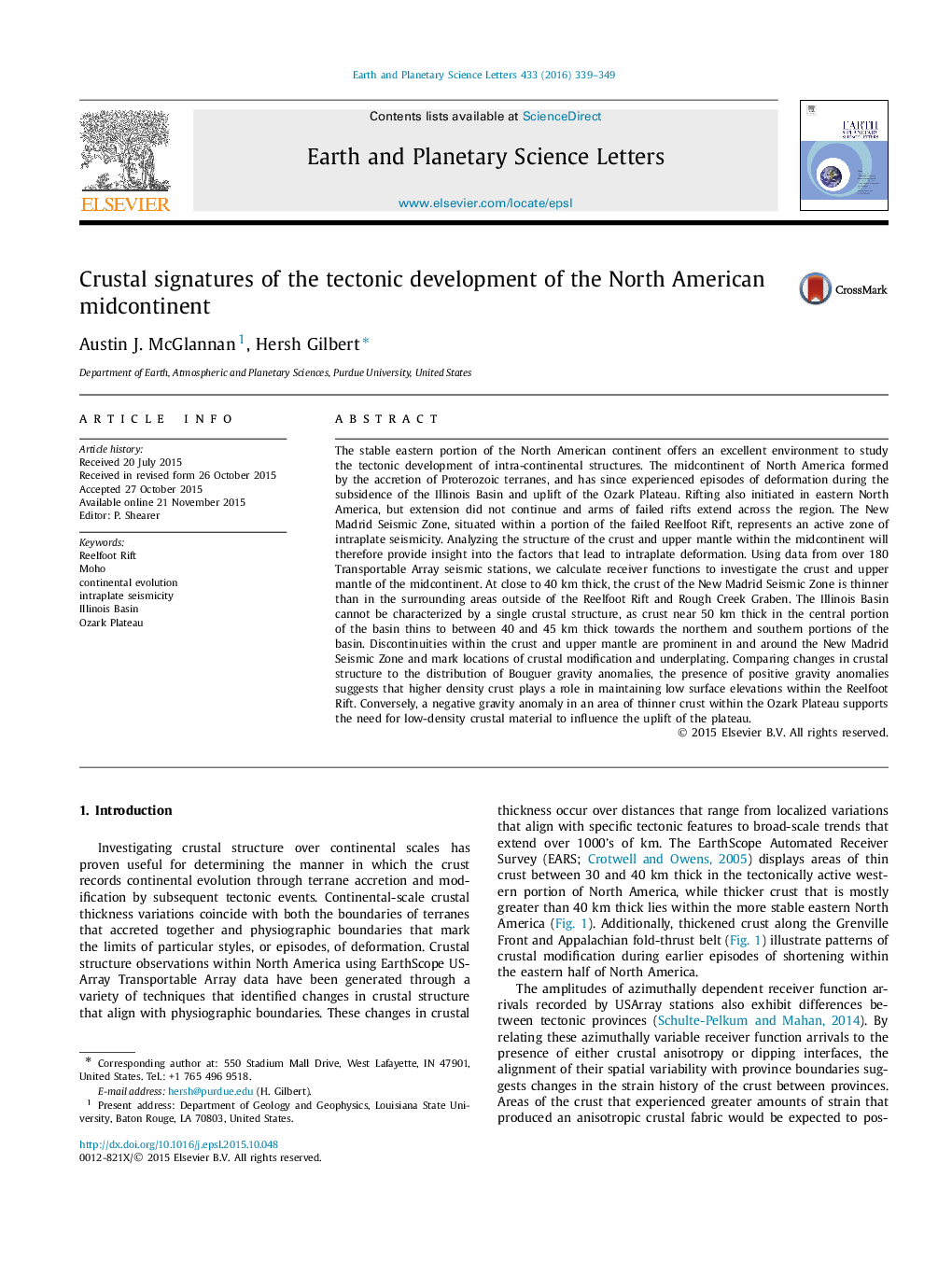| کد مقاله | کد نشریه | سال انتشار | مقاله انگلیسی | نسخه تمام متن |
|---|---|---|---|---|
| 6427711 | 1634723 | 2016 | 11 صفحه PDF | دانلود رایگان |
- Our study presents crustal thickness observations within the central US.
- Crustal thicknesses vary by >10 km within the midcontinent of North America.
- Mid-crustal and subcrustal discontinuities suggest layering.
- The New Madrid seismic zone possesses thin crust.
- Crustal thicknesses change within the Illinois Basin and Ozark Plateau.
The stable eastern portion of the North American continent offers an excellent environment to study the tectonic development of intra-continental structures. The midcontinent of North America formed by the accretion of Proterozoic terranes, and has since experienced episodes of deformation during the subsidence of the Illinois Basin and uplift of the Ozark Plateau. Rifting also initiated in eastern North America, but extension did not continue and arms of failed rifts extend across the region. The New Madrid Seismic Zone, situated within a portion of the failed Reelfoot Rift, represents an active zone of intraplate seismicity. Analyzing the structure of the crust and upper mantle within the midcontinent will therefore provide insight into the factors that lead to intraplate deformation. Using data from over 180 Transportable Array seismic stations, we calculate receiver functions to investigate the crust and upper mantle of the midcontinent. At close to 40 km thick, the crust of the New Madrid Seismic Zone is thinner than in the surrounding areas outside of the Reelfoot Rift and Rough Creek Graben. The Illinois Basin cannot be characterized by a single crustal structure, as crust near 50 km thick in the central portion of the basin thins to between 40 and 45 km thick towards the northern and southern portions of the basin. Discontinuities within the crust and upper mantle are prominent in and around the New Madrid Seismic Zone and mark locations of crustal modification and underplating. Comparing changes in crustal structure to the distribution of Bouguer gravity anomalies, the presence of positive gravity anomalies suggests that higher density crust plays a role in maintaining low surface elevations within the Reelfoot Rift. Conversely, a negative gravity anomaly in an area of thinner crust within the Ozark Plateau supports the need for low-density crustal material to influence the uplift of the plateau.
Journal: Earth and Planetary Science Letters - Volume 433, 1 January 2016, Pages 339-349
